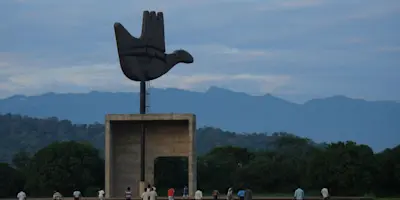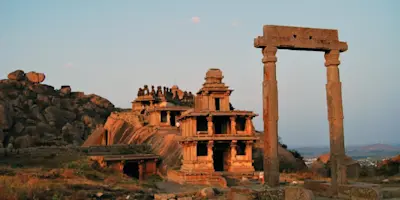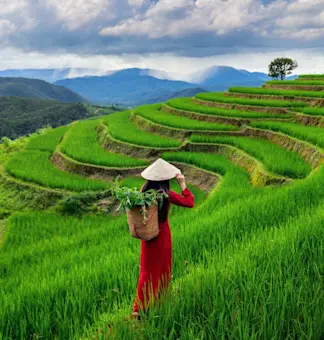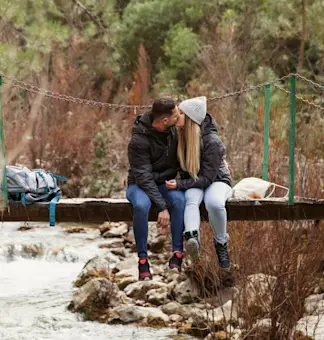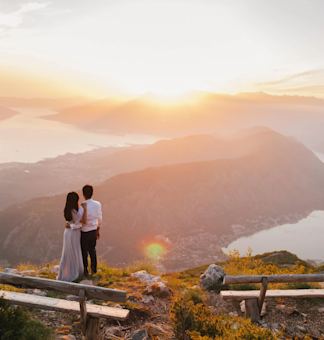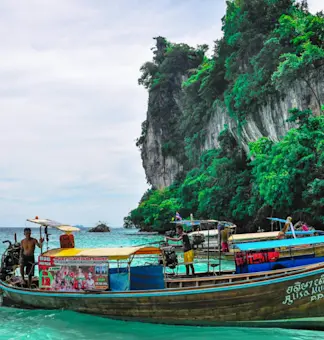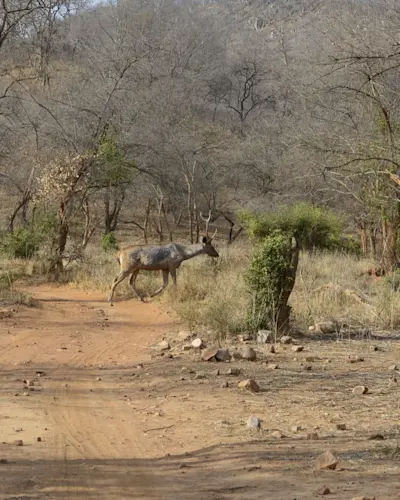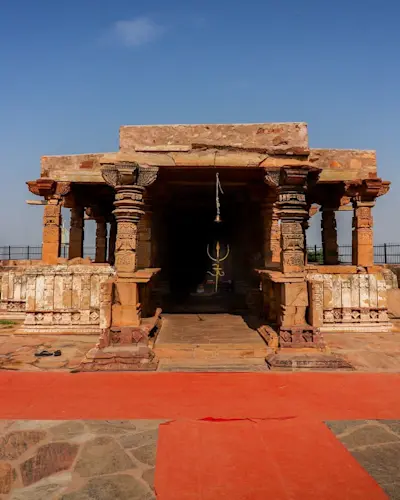🏝️ Top Tourist Destinations Near You | Explore Now – Travel Taxi
Discover extraordinary places within easy reach using our comprehensive guide to finding the best tourist destinations near your location. From natural wonders and historical sites to cultural venues and adventure parks, we'll help you uncover perfect getaways regardless of your interests, budget, or available time for exploration.
Finding Exceptional Places to Visit Near Your Location
In today's fast-paced world, the desire to escape routine and experience something new doesn't always align with the time or resources needed for distant travel. Fortunately, remarkable destinations often exist surprisingly close to home, waiting to be discovered. Finding a tourist destination near me has become easier than ever, opening possibilities for enriching experiences without extensive planning or long-distance journeys.
Every region offers distinctive attractions shaped by its unique geography, history, and culture. From natural wonders and historical landmarks to cultural institutions and adventure parks, your surrounding area likely contains numerous destinations worth exploring. This comprehensive guide will help you discover, evaluate, and enjoy the best tourist attractions in your vicinity, whether you're planning a few hours of exploration, a day trip, or a weekend getaway.
Understanding Nearby Tourist Destination Categories
When searching for a tourist destination near me, it helps to understand the different types of attractions that might be available in your region:
Natural Attractions: Scenic Beauty and Outdoor Experiences
Natural destinations showcase the distinctive landscapes, ecosystems, and outdoor recreational opportunities of your region.
Common Natural Attractions:
State and National Parks:
Protected areas featuring diverse ecosystems and recreational facilities
Scenic Viewpoints:
Overlooks offering panoramic vistas of mountains, coastlines, or cityscapes
Lakes and Waterways:
Opportunities for swimming, boating, fishing, and shoreline relaxation
Hiking Trails:
Pathways through forests, mountains, canyons, or desert landscapes
Beaches:
Coastal areas for swimming, sunbathing, and water sports
Botanical Gardens:
Curated plant collections showcasing local and exotic species
Wildlife Viewing Areas:
Designated spaces for observing native animals in natural habitats
Natural attractions typically offer something different in each season, making them worth revisiting throughout the year. Many provide both developed facilities for casual visitors and more remote areas for those seeking solitude or adventure. When evaluating natural destinations, consider factors like accessibility, required fitness level, and appropriate weather conditions for your planned activities.
Historical and Cultural Sites: Heritage Exploration
Historical and cultural attractions connect visitors to a region's past and artistic traditions through preserved locations and interpretive experiences.
Common Historical and Cultural Attractions:
Historic Districts:
Well-preserved neighborhoods showcasing regional architectural styles
Museums:
Institutions preserving and interpreting artifacts, artworks, and scientific specimens
Historic Homes:
Preserved residences reflecting different eras and social contexts
Archaeological Sites:
Locations containing physical evidence of past human activity
Cultural Centers:
Venues celebrating specific cultural traditions through exhibitions and performances
Art Galleries:
Spaces displaying visual art from historical to contemporary periods
Religious Sites:
Churches, temples, mosques, and other spiritual locations with architectural or cultural significance
These destinations often provide deeper understanding of your region's development and the diverse communities that have shaped its identity. Many offer guided tours, interpretive displays, and educational programs that enhance the visitor experience. Some rotate exhibitions or host special events, creating reasons for repeat visits to explore new aspects of the collection or site.
Entertainment and Recreational Venues: Active Enjoyment
Entertainment destinations focus on visitor engagement through activities, performances, and participatory experiences.
Common Entertainment Destinations:
Theme Parks:
Attractions centered around specific themes with rides and shows
Water Parks:
Aquatic recreation facilities with slides, pools, and water play areas
Zoos and Aquariums:
Facilities housing animal collections with educational programming
Performance Venues:
Theaters, amphitheaters, and concert halls hosting live entertainment
Sports Facilities:
Stadiums, arenas, and recreation centers for athletic events
Family Entertainment Centers:
Multi-activity venues with games, rides, and interactive experiences
Agritourism Sites:
Farms, orchards, and vineyards offering visitor activities and products
These attractions emphasize active participation rather than passive observation, making them particularly suitable for family outings and group excursions. Many offer seasonal programming, special events, and varied activities throughout the year. When selecting entertainment destinations, consider audience suitability, typical duration of visit, and additional costs beyond admission for a complete budget assessment.
Culinary and Shopping Destinations: Tasteful Experiences
These destinations center on food, beverages, and retail experiences unique to the region.
Common Culinary and Shopping Attractions:
Food Trails:
Curated routes connecting specialty food producers and restaurants
Farmers Markets:
Gatherings of local agricultural producers selling fresh products
Winery and Brewery Routes:
Clusters of beverage producers offering tours and tastings
Culinary Districts:
Neighborhoods known for distinctive dining options
Artisan Craft Centers:
Locations where traditional crafts are produced and sold
Historic Marketplaces:
Traditional commercial areas with distinctive architecture and local products
Shopping Districts:
Concentrations of unique retail establishments beyond standard mall offerings
These destinations highlight local products, traditional skills, and regional specialties that connect visitors to distinctive aspects of local culture. Many combine retail opportunities with demonstrations, workshops, or behind-the-scenes tours that explain production processes. Such attractions often support local economies directly and preserve traditional practices that might otherwise disappear.
Finding Hidden Gems Near Your Location
While popular attractions receive deserved attention, some of the most memorable destinations remain relatively undiscovered by mainstream tourism. These "hidden gems" often provide more authentic experiences with fewer crowds and lower costs.
Digital Discovery Methods
Modern technology offers numerous ways to uncover lesser-known destinations in your vicinity:
Specialized Search Approaches:
Use search phrases like "unusual attractions near me" or "hidden gems in [your region]"
Explore location-based social media tags beyond the most popular spots
Review travel blogger content focusing on off-beat destinations
Check platforms like Atlas Obscura specializing in unusual attractions
Use Google Maps to explore areas between major attractions, looking for interesting sites
Local Digital Resources:
Review local news sites' "things to do" sections highlighting lesser-known events
Join regional Facebook groups where locals share favorite spots
Explore regional subreddits for insider recommendations
Check university websites for museums, gardens, or performances open to the public
Review historical society websites for heritage sites beyond major museums
Navigation and Exploration Apps:
Use Roadtrippers to discover attractions along specific routes
Try Randonautica for randomized destination suggestions in your area
Explore Geocaching locations often placed near interesting but obscure sites
Check AllTrails for user-submitted trails that might lead to scenic spots
Review local hiking club websites for recommended destinations
Human Knowledge Sources
Despite technological advances, human expertise remains invaluable for discovering exceptional local destinations:
Community Knowledge Keepers:
Librarians at local libraries often maintain community information resources
Staff at visitor centers know beyond the standard tourist brochures
Local historical society members can direct you to overlooked historical sites
Nature center educators know scenic areas not featured in guidebooks
Long-time residents often know of beautiful spots not heavily promoted
Specialized Business Connections:
Independent bookstore staff typically know unique local attractions
Baristas and bartenders at established local businesses hear customer recommendations
Bed and breakfast owners cultivate knowledge of special places for guests
Outdoor equipment shop employees know less-traveled trails and natural areas
Art supply store staff often know about underground art spaces and installations
Educational Institutions:
University departments may maintain specialized museums or collections
Community college continuing education programs often organize local field trips
Science teachers know interesting geological or ecological sites
Art teachers can recommend studios and galleries beyond the mainstream
Local historians may offer occasional tours of overlooked historic areas
Day Trip Planning Strategies
For destinations within approximately 1-2 hours of your location, day trips offer satisfying experiences without accommodation expenses or extensive preparation.
Time Management Principles
Effective day trips require realistic time allocation:
Time Budgeting:
Allow one-third of available time for round-trip travel
Research typical visit duration for main attractions
Include buffer time for unexpected discoveries
Schedule meals strategically to maximize sightseeing time
Consider seasonal factors affecting opening hours and daylight
Route Optimization:
Plan circular rather than out-and-back routes when possible
Cluster attractions in the same general area to minimize driving
Use mapping apps to identify logical stop sequences
Consider morning outbound/evening return traffic patterns
Identify convenient rest stops and viewpoints along the route
Time-Saving Tactics:
Purchase tickets online in advance when available
Visit popular attractions at off-peak hours (early morning/late afternoon)
Pack meals and snacks to avoid restaurant waits
Research parking options in advance, especially in busy areas
Use pre-planned itineraries from tourism websites as starting points
Themed Day Trip Concepts
Organizing day trips around specific themes creates more cohesive experiences:
Natural Wonder Tours:
Waterfall circuits connecting multiple cascades
Coastal drives linking beach access points and viewpoints
Geological feature tours exploring formations like caves or rock outcrops
Wildlife viewing routes connecting nature preserves and observation areas
Seasonal natural phenomena (fall foliage, wildflower blooms, migration events)
Historical Exploration Routes:
Architectural tours showcasing specific building styles
Military history trails connecting battlefields and monuments
Industrial heritage routes linking historic manufacturing sites
Agricultural history tours of historic farms and rural structures
Cultural heritage paths through ethnic neighborhoods and sites
Culinary Adventure Circuits:
Winery or brewery trails with tastings
Farm-to-table experiences with producer visits
Ethnic food district explorations
Specialty food producer tours (cheese, chocolate, etc.)
Farmers market routes connecting multiple markets
Family-Friendly Considerations
Day trips with children require additional planning:
Child-Appropriate Timing:
Limit driving time to match children's attention spans
Schedule around typical nap times for young children
Plan main activities during children's high-energy periods
Allow extra time for spontaneous stops and discoveries
Consider abbreviated experiences at multiple locations rather than extended visits
Engagement Strategies:
Select destinations with interactive elements
Create scavenger hunts or observation games
Alternate active and passive activities
Include snack breaks as activity transitions
Prepare age-appropriate background information to build interest
Practical Preparations:
Research restroom availability and accessibility
Identify safe spaces for children to move freely
Pack entertainment for travel segments
Bring extra clothing for weather changes or accidents
Prepare for limited food options with familiar snacks
Weekend Getaway Development
For destinations requiring 2-4 hours of travel or warranting more extensive exploration, weekend getaways provide deeper experiences.
Accommodation Strategies
Lodging selection significantly impacts weekend experiences:
Location Optimization:
Stay centrally located to multiple attractions rather than adjacent to one
Consider accommodations in smaller towns near major attractions for better value
Evaluate walkability for evening dining and entertainment options
Research parking availability and costs if bringing a vehicle
Assess public transportation access if applicable
Accommodation Types:
Historic inns and B&Bs often provide local knowledge and character
Vacation rentals offer more space and kitchen facilities for families
Hotels with pools and amenities provide entertainment between outings
Camping options connect more directly with natural surroundings
Specialty lodging (treehouses, cabins, yurts) can become part of the experience
Booking Considerations:
Research seasonal pricing variations and book accordingly
Consider Sunday-Monday stays for lower rates than Friday-Saturday
Look for packages combining accommodation with attraction tickets
Check cancellation policies for flexibility with weather-dependent activities
Investigate loyalty programs for frequent travelers to the region
Multi-Day Itinerary Development
Effective weekend planning balances activity with relaxation:
Pacing Strategies:
Schedule most ambitious activities for full days, not arrival/departure days
Alternate active mornings with relaxed afternoons
Build in unstructured time for spontaneous discoveries
Allow time to enjoy accommodation amenities
Create weather-dependent and weather-independent options
Experience Variety:
Mix indoor and outdoor activities
Balance cultural and natural experiences
Incorporate both active and passive pursuits
Include historical context alongside contemporary attractions
Combine popular highlights with off-the-beaten-path discoveries
Logistical Efficiency:
Group activities geographically to minimize transit time
Research parking and access points in advance
Make reservations for high-demand experiences
Identify dining options near planned activities
Schedule popular attractions for less-crowded times (early mornings, weekdays)
Extended Family and Group Considerations
Multi-generational or friend group trips require additional planning:
Interest Accommodation:
Identify attractions with multi-level appeal
Plan some separate activities for different interest groups
Schedule group meals as reunion points
Select accommodations with gathering spaces
Create opportunities for both group bonding and individual exploration
Practical Group Management:
Establish communication methods for coordinating during the trip
Set clear meeting times and locations
Arrange transportation suitable for the group size
Research group rates and reservation requirements
Consider accessibility needs for all participants
Seasonal Destination Selection
Nearby attractions offer different experiences throughout the year, making seasonal planning essential for optimal visits.
Spring Exploration
Spring offers renewal themes and emerging natural beauty:
Spring Natural Highlights:
Wildflower displays and botanical garden peak blooms
Waterfall viewing during snowmelt and spring rains
Bird migration observation at wildlife refuges
Early season hiking on lower elevation trails
Newly opened scenic drives after winter closures
Spring Cultural Experiences:
Garden festivals and flower shows
Agricultural sites during planting and early growth
Spring-themed art exhibitions and performances
Heritage sites with seasonal opening celebrations
Food festivals featuring spring harvests
Spring Practical Considerations:
Prepare for variable weather with layered clothing
Check trail conditions after winter, especially at higher elevations
Research seasonal opening dates for weather-dependent attractions
Consider weekday visits to avoid spring break crowds
Take advantage of shoulder season rates before summer peak pricing
Summer Adventures
Summer provides maximum daylight and outdoor opportunities:
Summer Natural Destinations:
Swimming beaches and lakes
High-elevation hiking trails and mountain destinations
Shaded forest walks and riverside paths
Early morning wildlife viewing opportunities
Evening outdoor recreation in cooler temperatures
Summer Cultural Experiences:
Outdoor music festivals and concert series
Open-air historical reenactments and living history programs
Farmers markets at peak production
Street festivals and community celebrations
Outdoor art installations and sculpture gardens
Summer Practical Considerations:
Make accommodations reservations well in advance
Visit indoor attractions during peak afternoon heat
Schedule water-based activities for cooling relief
Prepare for summer crowds at popular destinations
Take advantage of extended summer hours at many attractions
Fall Discoveries
Fall combines comfortable temperatures with visual splendor:
Fall Natural Highlights:
Foliage viewing routes and overlooks
Apple orchards and pumpkin patches
Wildlife observation during migration periods
Comfortable hiking conditions on exposed trails
Scenic drives through colorful landscapes
Fall Cultural Experiences:
Harvest festivals and agricultural celebrations
Historic sites with autumn programming
Food and beverage events featuring seasonal products
Traditional craft demonstrations and sales
Native American cultural events tied to harvest traditions
Fall Practical Considerations:
Research peak foliage timing for your specific region
Visit popular leaf-viewing destinations on weekdays
Book accommodations early for peak foliage weekends
Check seasonal closing dates for summer-focused attractions
Take advantage of shoulder season pricing after summer peak
Winter Exploration
Winter offers distinctive experiences with fewer crowds:
Winter Natural Destinations:
Snow sports areas (skiing, snowshoeing, sledding)
Hot springs and geothermal features
Wildlife tracking in fresh snow
Frozen waterfalls and ice formations
Clear-air vistas from winter viewpoints
Winter Cultural Experiences:
Holiday light displays and festivals
Indoor museum special exhibitions
Historic sites with winter programming
Winter markets and craft fairs
Seasonal performances and traditions
Winter Practical Considerations:
Verify winter accessibility for remote attractions
Check road conditions and carry appropriate supplies
Research winter operating hours and seasonal closures
Take advantage of significantly reduced crowds at many sites
Look for winter promotion rates at typically summer-focused destinations
Regional Exploration Strategies
Different geographical regions offer distinctive destination types worth exploring through targeted approaches.
Mountain Region Exploration
Mountain areas combine natural grandeur with distinctive cultural traditions:
Mountain Experience Highlights:
Scenic overlooks and viewpoints
Alpine lakes and mountain meadows
Historic mining towns and mountain communities
High-elevation ecosystems and wildlife
Mountain resort facilities and activities
Mountain Exploration Strategies:
Research altitude considerations for unacclimatized visitors
Plan around seasonal road closures and conditions
Visit popular areas midweek to avoid weekend crowds
Consider gondola or chairlift access for non-hikers
Explore gateway communities for cultural context
Mountain Safety Considerations:
Monitor weather forecasts for rapid condition changes
Prepare for temperature variations with layered clothing
Carry appropriate safety supplies even for short excursions
Allow extra driving time on mountain roads
Respect wildlife and understand appropriate behavior in encounters
Coastal Area Discovery
Coastal regions offer diverse experiences beyond just beaches:
Coastal Experience Highlights:
Sandy beaches and swimming areas
Rocky shorelines and tide pools
Coastal trails and viewpoints
Maritime heritage sites and museums
Seafood culinary experiences
Coastal Exploration Strategies:
Research tide tables for tide pool and beach access
Consider shoulder season visits for reduced crowds
Explore working waterfronts and fishing communities
Seek elevated viewpoints for comprehensive coastal views
Visit beaches at different times of day for varied experiences
Coastal Safety Considerations:
Understand tidal patterns and safe beach access
Research swimming safety at specific beaches
Respect marine wildlife viewing guidelines
Prepare for wind and weather changes
Learn basic rip current identification and response
Urban Area Adventures
Cities and urban centers contain concentrated attractions worth systematic exploration:
Urban Experience Highlights:
Cultural districts and museum clusters
Historic neighborhoods and architectural highlights
Ethnic enclaves and cultural diversity
Culinary scenes and food destinations
Urban parks and green spaces
Urban Exploration Strategies:
Use public transportation to avoid parking challenges
Research walking tours for cohesive neighborhood experiences
Explore beyond downtown to find authentic local areas
Visit popular attractions during off-peak hours
Look for free museum days and cultural events
Urban Practical Considerations:
Research parking options and costs in advance
Consider city passes for multiple attraction access
Use navigation apps for real-time transit information
Identify public restroom locations for day trips
Research safe areas for evening exploration
Rural Landscape Appreciation
Rural areas offer authentic experiences and traditional practices:
Rural Experience Highlights:
Scenic agricultural landscapes
Traditional farming and crafting demonstrations
Country markets and roadside stands
Historical rural structures and working farms
Small town main streets and community events
Rural Exploration Strategies:
Research seasonal agricultural activities and harvest times
Explore scenic byways rather than main highways
Visit during community festival weekends
Take advantage of farm tour opportunities
Support rural economies through direct purchases
Rural Practical Considerations:
Verify business hours, which often differ from urban establishments
Plan for limited cell service in remote areas
Respect private property and working farm operations
Research fuel availability for remote area exploration
Prepare for limited food and restroom facilities between towns
Special Interest Destination Focus
Different interests call for specialized destination research and selection:
For History Enthusiasts
Historical site exploration benefits from thematic approaches:
Historical Site Categories:
Archaeological sites and ancient settlements
Battlefield and military history locations
Industrial heritage and technological history
Architectural history showcased in historic districts
Living history farms and agricultural heritage
History Exploration Enhancements:
Research historical context before visiting sites
Look for specialized tours led by historians or archaeologists
Time visits to coincide with reenactments or demonstrations
Explore connected sites to understand historical narratives
Visit local historical societies for deeper context
Recommended Resources:
National and state historic registries for comprehensive listings
University history department public programs
Historical society and preservation organization websites
Period-specific interest groups (Civil War Roundtables, etc.)
Heritage trail maps connecting thematic sites
For Nature and Outdoor Enthusiasts
Natural area exploration offers diverse environmental experiences:
Natural Destination Types:
Hiking trail networks of varying difficulties
Wildlife observation areas and refuges
Geological features and formations
Aquatic environments for paddling and exploration
Scenic byways through significant landscapes
Nature Exploration Enhancements:
Learn basic identification skills for local species
Visit the same locations across different seasons
Participate in citizen science projects while exploring
Attend naturalist-led programs for deeper understanding
Explore different ecosystems within your region
Recommended Resources:
State and national park websites for trail information
Audubon Society and Sierra Club local chapters
Nature center programs and guided walks
Conservation organization preserves and trails
University extension programs on natural history
For Culinary Travelers
Food-focused exploration reveals regional cultural traditions:
Culinary Destination Types:
Agricultural tourism sites (farms, orchards, vineyards)
Food production facilities with tours (cheese, chocolate, etc.)
Culinary heritage sites and historic food establishments
Farmers markets and food halls
Regional food festivals and events
Culinary Exploration Enhancements:
Research seasonal harvest schedules for optimal visits
Look for hands-on workshops and demonstrations
Explore ethnic enclaves for authentic traditional foods
Follow food trails connecting thematic producers
Investigate historical connections to regional specialties
Recommended Resources:
State agricultural tourism directories
Food and beverage guild membership lists
Culinary trail maps developed by tourism offices
Slow Food and farm-to-table organization websites
Specialty food publication recommendations
For Family-Focused Exploration
Family destinations require specific features for successful visits:
Family-Friendly Destination Types:
Interactive museums and science centers
Animal experiences (farms, petting zoos, wildlife centers)
Outdoor recreation areas with varied difficulty levels
Historical sites with living history and demonstrations
Natural areas with structured discovery opportunities
Family Exploration Enhancements:
Research age-appropriateness of specific attractions
Look for hands-on activities and participatory elements
Create scavenger hunts or exploration games
Identify attractions with family-friendly amenities
Balance educational content with pure entertainment
Recommended Resources:
Family travel blogs specific to your region
Parks department educational programs
Museum family day schedules and programs
Community event calendars for family activities
Library children's department recommendations
Discovering India's Diverse Tourist Destinations
India offers extraordinary regional diversity for travelers to explore:
Heritage and Historical Exploration
India's rich historical tapestry comes alive through specialized heritage tours:
Golden Triangle Circuit: The classic Delhi-Agra-Jaipur route showcases magnificent Mughal architecture and Rajput heritage:
Access the circuit through
with expert historical guides
Visit UNESCO World Heritage Sites including the Taj Mahal, Red Fort, and Amber Fort
Experience the contrasting architectural traditions of different ruling dynasties
Convenient
services connect key historical sites
Extended Heritage Connections: Beyond the Golden Triangle, specialized Heritage Tours explore:
Temple architecture of Southern India
Colonial heritage buildings in metropolitan centers
Living heritage of traditional crafts and artisanal techniques
Palace architecture of former princely states
Natural Wonders and Landscapes
India's diverse ecosystems support remarkable wildlife viewing and natural experiences:
Himalayan Majesty: Northern mountain regions offer breathtaking landscapes and cultural richness:
showcases accessible Himalayan experiences
features distinctive mountain cultures and landscapes
provides high-altitude desert exploration
Wildlife Encounters: India's remarkable biodiversity supports exceptional wildlife viewing:
showcase India's magnificent Bengal tigers
provides access to premier tiger habitat
Nature sanctuaries throughout the country protect diverse ecosystems
Adventure Experiences: For active travelers, India offers diverse outdoor challenges:
combine natural settings with exciting activities
Trekking routes traverse magnificent Himalayan landscapes
Water adventures explore coastal regions and river systems
Cultural Immersion Opportunities
India's cultural diversity offers profound immersion experiences:
Regional Cultural Discoveries: Each Indian region presents distinctive cultural traditions:
showcases desert culture, textile traditions, and royal heritage
Convenient transportation through options like
connects traditional and modern planned cities
Spiritual Exploration: India's diverse spiritual traditions welcome respectful visitors:
Ancient temple complexes throughout southern India
Sacred river traditions along the Ganges
facilitates access to important Sufi heritage
connects to significant Hindu pilgrimage sites
Practical Tips for Destination Visitors
Maximize your experiences with these practical strategies:
Pre-Visit Research Enhancement
Effective preparation improves destination experiences:
Information Gathering Strategies:
Read visitor reviews focusing on your specific interests
Check official websites for current hours and restrictions
Review recent photos for accurate expectations
Research facility amenities (restrooms, food, accessibility)
Identify nearby alternatives if primary destination is crowded
Timing Optimization:
Research typical busy periods and plan accordingly
Check event calendars that might affect crowds
Identify special programming or demonstration schedules
Verify seasonal operation dates for weather-dependent attractions
Consider weather patterns for outdoor destinations
Cost Management:
Look for combination tickets covering multiple attractions
Research discount days or reduced admission periods
Check reciprocal membership benefits from home institutions
Compare package tours versus independent visits
Research transportation costs including parking fees
During-Visit Experience Enhancement
Maximize enjoyment during your destination visit:
Engagement Strategies:
Take advantage of introductory orientations or overview exhibits
Participate in guided tours for expert insights
Ask questions of site staff for deeper understanding
Look for interactive opportunities and demonstrations
Balance structured learning with unguided exploration
Documentation Approaches:
Photograph information panels for later reference
Take notes on facts or stories you want to remember
Create personal photo sequences documenting complete experiences
Record audio descriptions of significant features
Collect maps and brochures for trip documentation
Comfort Maintenance:
Locate restrooms upon arrival
Identify shade or indoor rest areas
Bring appropriate weather protection
Carry water and snacks where permitted
Wear appropriate footwear for the environment
Post-Visit Connection Development
Extend the value of your destination experiences:
Knowledge Deepening:
Research questions that arose during your visit
Read recommended books related to the destination
Follow the destination on social media for ongoing learning
Look for related destinations to build thematic understanding
Consider specialized courses related to your interests
Memory Preservation:
Organize photos with descriptive captions
Create trip journals or digital records
Share experiences through personal blogs or social media
Create physical or digital scrapbooks
Display meaningful souvenirs or photographs
Community Connection:
Write reviews to help other travelers
Join interest groups related to the destination type
Attend events related to destination themes
Support conservation or preservation efforts
Return during different seasons for new perspectives
Frequently Asked Questions
What are the best ways to find lesser-known but high-quality destinations near me?
Beyond standard search terms like "tourist destination near me," try specific qualifiers such as "hidden gems," "local favorites," or "off the beaten path" combined with your location. Social media provides valuable resources through location tags on Instagram (look beyond the most popular posts), local Facebook groups where residents share favorite spots, and platforms like Reddit where locals often recommend authentic experiences. For natural areas, apps like AllTrails highlight user-submitted locations, while Atlas Obscura specializes in unusual attractions. Perhaps most valuable are conversations with longtime residents, particularly those working in service industries like independent bookstores, coffee shops, or outdoor equipment stores, who regularly share recommendations with visitors.
How can I find destinations suitable for visitors with mobility limitations?
When researching accessible experiences, use specific search terms like "wheelchair accessible attractions," "accessible trails," or "ADA compliant destinations" alongside your location. Many tourism websites now include accessibility filters or dedicated sections describing access features. Contact destinations directly about specific needs, as many can provide accommodations not mentioned on websites. For natural areas, search for "accessible trails" or "all-access pathways" which identify routes specifically designed for mobility devices. Organizations like the National Center on Accessibility maintain databases of accessible outdoor recreation areas. Additionally, review sites increasingly include accessibility information in reviews, allowing you to filter for relevant feedback from visitors with similar considerations.
What strategies work best for avoiding crowds at popular destinations?
Timing represents your most powerful strategy for avoiding crowds. Visit on weekdays rather than weekends when possible, particularly Tuesday through Thursday when tourist numbers typically reach their lowest points. Arrive at opening time or within the last two hours before closing when most tour groups and families have departed. For seasonal destinations, consider shoulder season visits when weather remains amenable but peak crowds have dispersed. Research local holidays and school break schedules to avoid unexpectedly busy periods. At specific destinations, explore less-visited sections while more popular areas absorb crowds, or use online tickets and timed entry reservations to minimize waiting. Finally, consider similar alternative destinations that offer comparable experiences with fewer visitors.
How can I create the most effective weekend getaway itinerary?
Successful weekend itineraries balance activity with relaxation through thoughtful planning. Select destinations within 2-3 hours of your starting point to minimize travel-to-experience ratio, and choose accommodations central to multiple attractions rather than adjacent to just one. Alternate active mornings with relaxed afternoons, building in unstructured time for spontaneous discoveries. Group activities geographically to minimize transit time between sites, and research opening hours and typical visit durations to create realistic timing. Schedule your highest-priority experience for the first full day in case weather or other factors require schedule adjustments. Finally, incorporate variety by mixing indoor and outdoor activities, cultural and natural experiences, and popular highlights with off-the-beaten-path discoveries.
What should I consider when evaluating attraction reviews to determine if a destination matches my interests?
Look beyond overall ratings to review content that addresses your specific priorities. Filter for reviews from travelers similar to you (families, solo travelers, specific interests) and pay attention to visit timing for seasonal context. Focus on specific details rather than general opinions, particularly regarding factors important to your experience. Note patterns across multiple reviews rather than outliers, especially regarding recurring positive or negative aspects. Be particularly attentive to reviews mentioning visit duration, as this helps with itinerary planning. Consider review recency, as management changes, renovations, or policy updates can significantly alter experiences. Finally, look for reviews with photographs to provide visual context beyond written descriptions.
How far in advance should I plan local trips versus spontaneous exploration?
The planning timeline varies significantly by destination type, season, and visitation patterns. For high-demand experiences like limited-access historic sites, popular guided tours, or timed entry attractions, book 2-4 weeks ahead, extending to 1-2 months for peak season or holiday periods. Accommodations in popular weekend destinations typically require 3-4 weeks advance booking for standard weekends and 1-2 months for holiday periods or special events. However, maintain balance by leaving space for spontaneous exploration—many memorable experiences come from unplanned discoveries.
Featured Tours
Tours you might be interested in
Featured Activites
Activites you might be interested in

